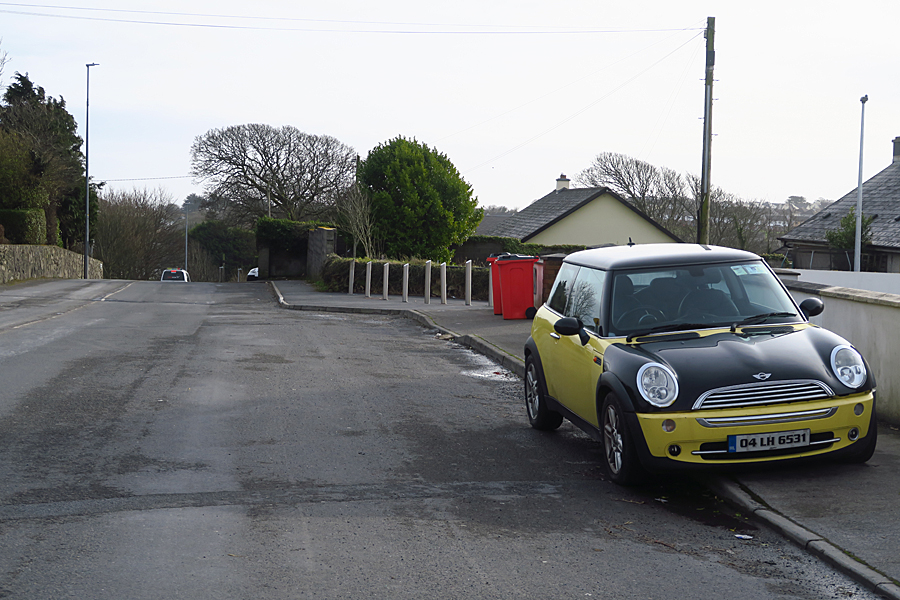As recent events in Limerick make clear, having a team of #ActiveTravel staff is no guarantee of progress.
Ireland has deep-rooted, systemic problems with local government, urban planning and the organisation of transport.
Ireland has deep-rooted, systemic problems with local government, urban planning and the organisation of transport.
https://twitter.com/neasabh/status/1627353018206126082
One systemic problem that cannot be addressed by throwing money at it is our long-standing practice of developer-led "planning".
If a landowner decides to build something, then something might get built. If not, there seems to be no mechanism or momentum for the State to act.
If a landowner decides to build something, then something might get built. If not, there seems to be no mechanism or momentum for the State to act.
If a property owner decides to act, or not to act, in a certain way, it seems as if the State, short of a CPO, is unwilling or unable to act. The State uses CPOs to plough motorways nationwide through the countryside, but appears powerless to develop even 20 metres of footpath. 



There are innumerable examples of this "planning" chaos all around Galway City. Development, whether by the Council or by private interests, typically occurs in a patchwork. Housing units sprout up here and there more or less at random. Brand new estates are separated by walls. 







The developers of these 'pop-up' estates typically claim that their location is ideal for all modes of travel. Every amenity is a few minutes' drive away, top-class public transport services are on your doorstep, and you can "stroll" to the shops.
https://twitter.com/cosaingalway/status/1301534185174245376?s=20
The reality, as is nearly always the case, looks rather different. Planning applications, promotional websites and sales brochures all have to say the right things, but only in relation to what's inside the 'red line'. The developer and the "planners" need not look beyond it. 







In this liminal world of Irish urban "planning", developers can say things such as that "Fánán is only a 5-minute stroll from the local shopping centre", yet neither they nor the planning authority are required to take into account the absence of footpaths outside the 'red line'. 

The Irish system of red-lined developer-led urban "planning" means that individual dwellings or wall-separated housing estates can spring up piecemeal along a stretch of road, with each development having no connection to the other.
Footpaths can remain unfinished for decades.

Footpaths can remain unfinished for decades.


If -- and only if -- Landowner A builds on a piece of land, they will be required to provide a footpath. If Landowner B for whatever reason decides not to build, or can't build, then there will be no footpath on their part of the road.
This situation might persist for 50 years.

This situation might persist for 50 years.


The land is private. Only the road is public.
Yet it's the landowner's actions which ultimately determine what happens with the road alignment.
Or it certainly appears that way, in any case.
Yet it's the landowner's actions which ultimately determine what happens with the road alignment.
Or it certainly appears that way, in any case.

What else other than the supremacy of private property (as enshrined in Bunreacht na hÉireann, incidentally) might explain how something as simple as a stretch of pavement to walk on is seemingly impossible to achieve, as a public good in its own right? 





What other factors might dictate that the need for a public footway must always be subordinated to a landowner's preference for, say, retaining their entire road frontage completely intact, forever? 







Discontinuous footpaths on Upper Ballymoneen Road. 👇
Though now in suburbia, and subject to more dense development, these formerly rural roads would have been a sought-after location for that other well-known Irish "planning" phenomenon, "one-off" housing.


Though now in suburbia, and subject to more dense development, these formerly rural roads would have been a sought-after location for that other well-known Irish "planning" phenomenon, "one-off" housing.



Lower Ballymoneen Road. 👇
New developments are required to have a footpath outside. Pre-existing houses can remain as they are, with their curtilage extending to the road's edge.
The Council can "upgrade" the scraps of footpath that already exist. But no more than that.
Why?



New developments are required to have a footpath outside. Pre-existing houses can remain as they are, with their curtilage extending to the road's edge.
The Council can "upgrade" the scraps of footpath that already exist. But no more than that.
Why?




These State failures have consequences.
https://twitter.com/HannahEDaly/status/1628814004759011330?s=20
• • •
Missing some Tweet in this thread? You can try to
force a refresh










